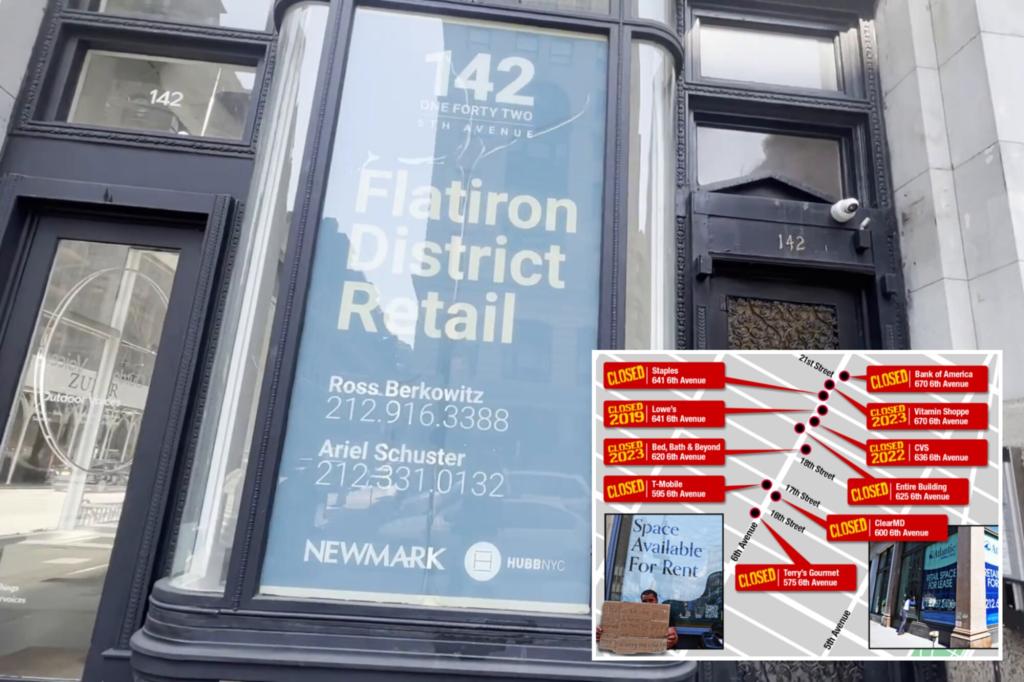The Flatiron District in Manhattan is facing a significant decline, with many empty storefronts and major retailers leaving the area. Businesses that are struggling to survive are dealing with rampant shoplifting and thefts, contributing to their challenges. Inflation and the shift to working from home have also impacted the local economy negatively. The area has seen a sharp increase in store closures, with several prominent retailers like Lowe’s, Bed Bath & Beyond, T-Mobile, and Bank of America closing their doors in recent years.
Local residents are lamenting the loss of businesses in the area, describing it as a sign of a decaying community. They attribute the decline to the rise of online shopping, pandemic-related business failures, and the overall decline in quality of life in the neighborhood. Merchants are feeling the effects of reduced foot traffic and rising rents, further adding to the struggles faced by businesses in the district. The Flatiron District is not as vibrant as it once was, and efforts to revitalize the area are facing significant challenges.
Crime has become a pressing issue in the Flatiron District, with spikes in retail theft and petty larceny contributing to the already difficult business environment. The NYPD 13th Precinct has reported a significant increase in retail thefts and petty larcenies over the past two years, with merchants feeling helpless in the face of escalating crime. Despite efforts to address the issue, the trend shows no signs of improvement, with thefts and larcenies continuing to rise in the area.
Retail theft statistics for the neighborhood have shown a substantial increase, with a 76% jump in retail thefts and a more than 57% increase in petty larcenies compared to the previous year. The situation is only expected to worsen despite efforts to combat the rise in crime in the area. Merchants are concerned about the future of their businesses, with many feeling vulnerable to the challenges posed by the current environment. The overall outlook for the Flatiron District remains uncertain, with businesses struggling to survive and residents feeling the impact of the neighborhood’s decline.
Major retailers such as Vitamin Shoppe and CVS have also cited factors such as foot traffic patterns and lease costs as reasons for closing their stores in the Flatiron District. The decisions to shutter their outlets were based on a variety of factors, including market dynamics and access to pharmacy services. With rents on the rise and foot traffic patterns changing, businesses in the area are facing unprecedented challenges. The future of the Flatiron District remains uncertain, with efforts to revitalize the area likely to face ongoing obstacles.
Despite the challenges facing the Flatiron District, some businesses are continuing to fight to stay afloat. Merchants like Zak Clapham, who manages a mobile phone shop in the area, are determined to weather the storm. However, with closures of major retailers, increasing crime rates, and a decline in foot traffic, the road ahead remains difficult. The area is grappling with a changing retail landscape, and the effects of these shifts are being felt by businesses, residents, and the community at large. Efforts to address the challenges facing the Flatiron District are ongoing, but the future remains uncertain for this once-thriving business district in Manhattan.


